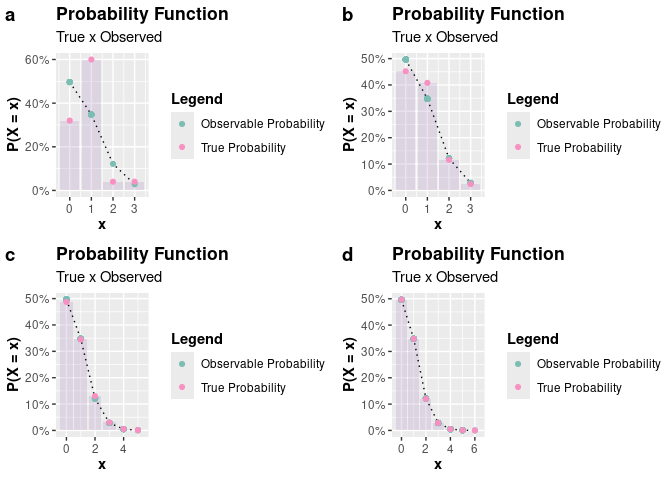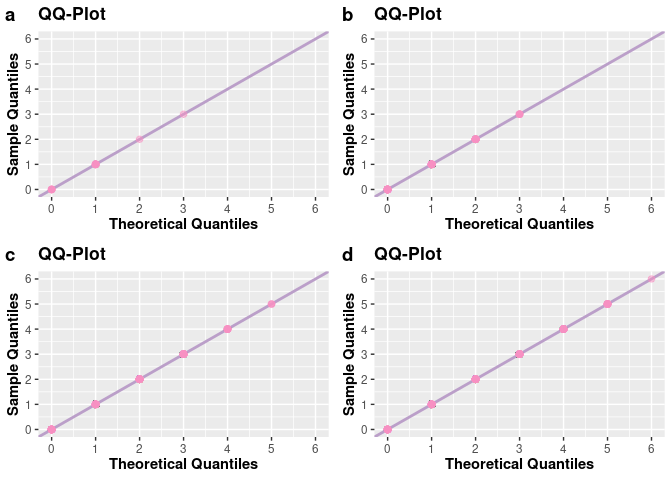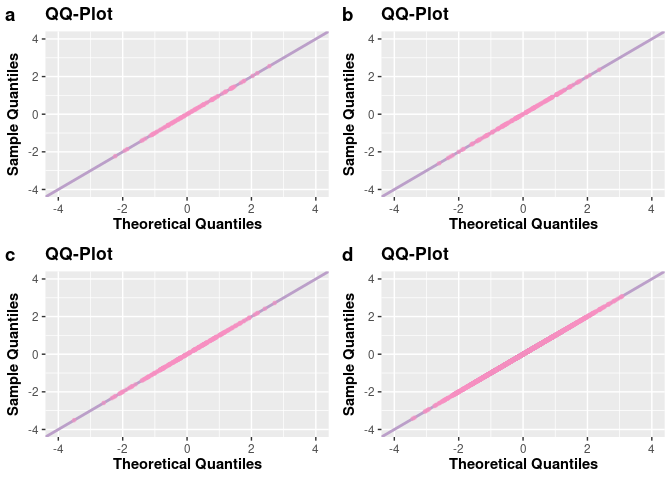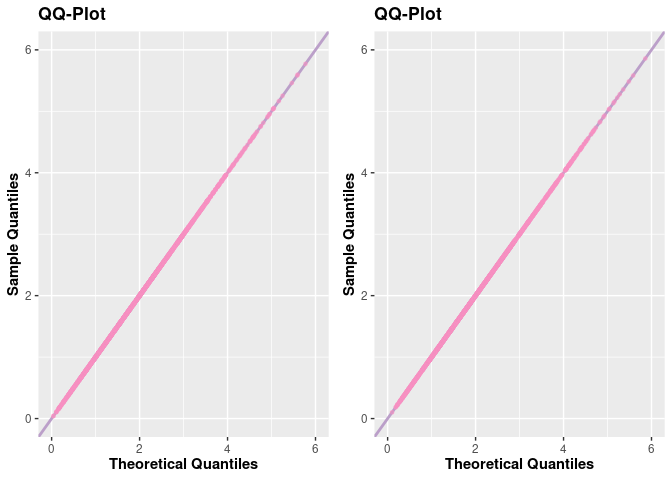
The hardware and bandwidth for this mirror is donated by dogado GmbH, the Webhosting and Full Service-Cloud Provider. Check out our Wordpress Tutorial.
If you wish to report a bug, or if you are interested in having us mirror your free-software or open-source project, please feel free to contact us at mirror[@]dogado.de.

Generating pseudo-random observations from a probability distribution is a common task in statistics. Being able to generate pseudo-random observations from a probability distribution is useful for simulating scenarios, in Monte-Carlo methods, which are useful for evaluating various statistical models.
The acceptance-rejection method was developed by John von Neumann in 1951 and is a well-known technique present in various computational statistics books. The original reference can be found at the link below:
The inversion method is a common way to do this, but it is not always possible to find a closed-form formula for the inverse function of the cumulative distribution function of a random variable \(X\), that is, \(q(u) = F^{-1}(u) = x\) (quantile function), where \(F\) is the cumulative distribution function of \(X\) and \(u\) is a uniformly distributed random variable in the interval \((0, 1)\).
Whenever possible, it is preferable to use the inversion method to generate pseudo-random observations from a probability distribution. However, when it is not possible to find a closed-form formula for the inverse function of the cumulative distribution function of a random variable, it is necessary to resort to other methods. One way to do this is through the acceptance-rejection method, which is a Monte-Carlo procedure. This package aims to provide a function that implements the Acceptance and Rejection method for generating pseudo-random observations from probability distributions that are difficult to sample directly.
The package AcceptReject provides
the accept_reject()
function, in addition to other functions, that implements the
acceptance-rejection method in an optimized manner to generate
pseudo-random observations for discrete or continuous random variables.
The accept_reject()
function operates in parallel on Unix-based operating systems such as
Linux and MacOS and operates sequentially on Windows-based operating
systems; however, it still exhibits good performance. By default, on
Unix-based systems, observations are generated sequentially, but it is
possible to generate observations in parallel if desired, by using the
parallel = TRUE argument.
The accept_reject()
function, by default, attempts to maximize the probability of acceptance
of the pseudo-random observations generated. Suppose \(X\) and \(Y\) are random variables with probability
density function (pdf) or probability function (pf) \(f\) and \(g\), respectively. Furthermore, suppose
there exists a constant \(c\) such
that
\[\frac{f_X(x)}{g_Y(y)} \leq c.\]
By default, the accept_reject function attempts to find the value of
\(c\) that maximizes the probability of
acceptance of the pseudo-random observations generated. However, it is
possible to provide a value of \(c\) to
the accept_reject()
function through the argument c, where \(Y\) is a random variable for which we know
how to generate observations. For the accept_reject()
function, it is not necessary to specify the probability function or
probability density function of \(Y\)
to generate observations of \(X\) for
discrete and continuous cases, respectively. For the discrete and
continuous cases, \(Y\) follows the
discrete uniform distribution function and continuous uniform
distribution function, respectively.
Since the probability of acceptance is \(1/c\), the accept_reject()
function attempts to find the minimum value of \(c\) that satisfies the description above.
Unless you have compelling reasons to provide a value for the
c argument of the accept_reject()
function, it is recommended to use c = NULL (default),
allowing a value of \(c\) to be
automatically determined.
The package is being versioned on GitHub. You can install the development version of AcceptReject, and to do this, you must first install the remotes package and then run the following command:
# install.packages("remotes")
# or remotes::install_github("prdm0/AcceptReject", force = TRUE)
library(AcceptReject)The force = TRUE argument is not necessary. It is only
needed in situations where you have already installed the package and
want to reinstall it to have a new version.
You can also install the package version available on Comprehensive R Archive Network - CRAN:
install.packages("AcceptReject")Please note the examples below on how to use the accept_reject()
function to generate pseudo-random observations of discrete and
continuous random variables. For further details, refer to the
function’s documentation Reference
and the Vignette.
In the examples, we use well-known distributions, but it’s important
to note that the accept-reject method can be used to generate
observations from probability distributions for which we don’t know how
to generate observations directly. Thus, if you need to generate
observations from a random variable with a distribution for which there
are no built-in functions in R that you can use to generate observations
(such as functions like rnorm(), rgamma(),
rweibull(), rchisq(), among others), the AcceptReject package
might be what you need. 🎉
As an example, let \(X \sim Poisson(\lambda
= 0.7)\). We will generate \(n =
1000\) observations of \(X\)
using the acceptance-rejection method, using the
accept_reject() function. Note that it is necessary to
provide the xlim argument. Try to set an upper limit value
for which the probability of \(X\)
assuming that value is zero or very close to zero. In this case, we
choose xlim = c(0, 6), where
dpois(x = 6, lambda = 0.7) is very close to zero
(8.1142728^{-5}).
library(AcceptReject)
#>
#> Anexando pacote: 'AcceptReject'
#> O seguinte objeto é mascarado por 'package:stats':
#>
#> qqplot
library(cowplot) # install.packages("cowplot")
# Ensuring Reproducibility
set.seed(0)
simulation <- function(n){
AcceptReject::accept_reject(
n = n,
f = dpois,
continuous = FALSE,
args_f = list(lambda = 0.7),
xlim = c(0, 6),
parallel = TRUE
)
}
a <- simulation(25L)
b <- simulation(250L)
c <- simulation(2500L)
d <- simulation(25000L)
# Plots
p1 <- plot(a)
p2 <- plot(b)
p3 <- plot(c)
p4 <- plot(d)
plot_grid(p1, p2, p3, p4, nrow = 2L, labels = c("a", "b", "c", "d"))
# QQ-Plots
q1 <- qqplot(a, size_points = 2)
q2 <- qqplot(b, size_points = 2)
q3 <- qqplot(c, size_points = 2)
q4 <- qqplot(d, size_points = 2)
plot_grid(q1, q2, q3, q4, nrow = 2L, labels = c("a", "b", "c", "d"))
To expand beyond examples of generating pseudo-random observations of discrete random variables, consider now that we want to generate observations from a random variable \(X \sim \mathcal{N}(\mu = 0, \sigma^2 = 1)\). We chose the normal distribution because we are familiar with its form, but you can choose another distribution if desired.
library(AcceptReject)
library(cowplot) # install.packages("cowplot")
# Ensuring reproducibility
set.seed(0)
simulation <- function(n){
AcceptReject::accept_reject(
n = n,
f = dnorm,
continuous = TRUE,
args_f = list(mean = 0, sd = 1),
xlim = c(-4, 4),
parallel = TRUE
)
}
a <- simulation(n = 100L)
b <- simulation(n = 150L)
c <- simulation(n = 250L)
d <- simulation(n = 2500L)
# Plots
p1 <- plot(a)
p2 <- plot(b)
p3 <- plot(c)
p4 <- plot(d)
plot_grid(p1, p2, p3, p4, nrow = 2L, labels = c("a", "b", "c", "d"))
# QQ-plots
q1 <- qqplot(a)
q2 <- qqplot(b)
q3 <- qqplot(c)
q4 <- qqplot(d)
plot_grid(q1, q2, q3, q4, nrow = 2L, labels = c("a", "b", "c", "d"))
The accept_reject()
function supports, for the continuous case, specifying
a base probability density function if you don’t want to use the
continuous uniform distribution as the default base.
When choosing to specify another probability density function different from the uniform one, it’s necessary to specify the following arguments:
f_base: base probability density function;random_base: sampling from the base probability density
function;args_f_base: list with the parameters of the base
density.By default, all of them are NULL, and the continuous
uniform distribution in xlim is used as the base. If at
least one of these arguments is not specified, no error will occur, and
the continuous uniform distribution in xlim will still be
used as the base.
For the discrete case, if the user mistakenly specifies any of these
arguments, i.e., when continuous = FALSE, the accept_reject()
function will ignore these arguments and use the discrete uniform
distribution as the base.
If you choose to specify a base density, it’s convenient to inspect
it by comparing the base density function with the theoretical
probability density function. The inspect()
function facilitates this task. The inspect()
function will plot the base probability density function and the
theoretical probability density function, find the intersection between
the densities, and display the value of the intersection area on the
plot. These are important pieces of information to decide if the base
probability density function specified in the args_f_base
argument and the value of c (default is 1) are
appropriate.
library(AcceptReject)
library(cowplot) # install.packages("cowplot")
# Ensuring reproducibility
set.seed(0)
# Inspecting
# Case a
a <- inspect(
f = dweibull,
args_f = list(shape = 2.1, scale = 2.2),
f_base = dgamma,
args_f_base = list(shape = 2.8, rate = 1.2),
xlim = c(0, 6),
c = 1.2
)
# Inspecting
# Case b
b <- inspect(
f = dweibull,
args_f = list(shape = 2.1, scale = 2.2),
f_base = dgamma,
args_f_base = list(shape = 2.9, rate = 2.5),
xlim = c(0, 6),
c = 1.4
)
plot_grid(a, b, nrow = 2L, labels = c("a", "b"))
Notice that considering the distribution in scenario “a” in the code
above is more convenient. Note that the area is approximately 1, the
base probability density function with parameters
shape = 2.8 and rate = 1.2 provides a shape
close to the theoretical distribution, and c = 1.2 ensures
that the base density function upper bounds the theoretical probability
density function. Therefore, considering f_base with \(\Gamma(\alpha = 2.8, \beta = 1.2)\) and
c = 1.2 is a reasonable choice for a base distribution.
Therefore, passing arguments to f_base = dgamma,
args_f_base = list(shape = 2.8, rate = 1.2), and
c = 1.2 to the accept_reject()
function will lead us to an even more efficient code.
library(AcceptReject)
library(tictoc) # install.packages("tictoc")
# Ensuring reproducibility
set.seed(0)
# Não especificando a função densidade de probabilidade base
tic()
case_1 <- accept_reject(
n = 2000,
continuous = TRUE,
f = dweibull,
args_f = list(shape = 2.1, scale = 2.2),
xlim = c(0, 6)
)
toc()
#> 0.005 sec elapsed
# Specifying the base probability density function
tic()
case_2 <- accept_reject(
n = 2000,
continuous = TRUE,
f = dweibull,
args_f = list(shape = 2.1, scale = 2.2),
f_base = dgamma,
random_base = rgamma,
args_f_base = list(shape = 2.8, rate = 1.2),
xlim = c(0, 6),
c = 1.2
)
toc()
#> 0.004 sec elapsed
# Visualizing the results
p1 <- plot(case_1)
p2 <- plot(case_2)
plot_grid(p1, p2, nrow = 2L)
# QQ-plot
q1 <- qqplot(case_1)
q2 <- qqplot(case_2)
plot_grid(q1, q2, nrow = 1L)
Notice that the results were very close in a graphical analysis. However, the execution time specifying a convenient base density was lower for a very large sample.
These binaries (installable software) and packages are in development.
They may not be fully stable and should be used with caution. We make no claims about them.
Health stats visible at Monitor.